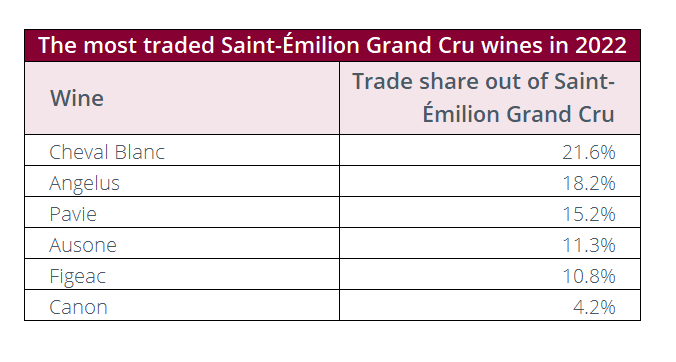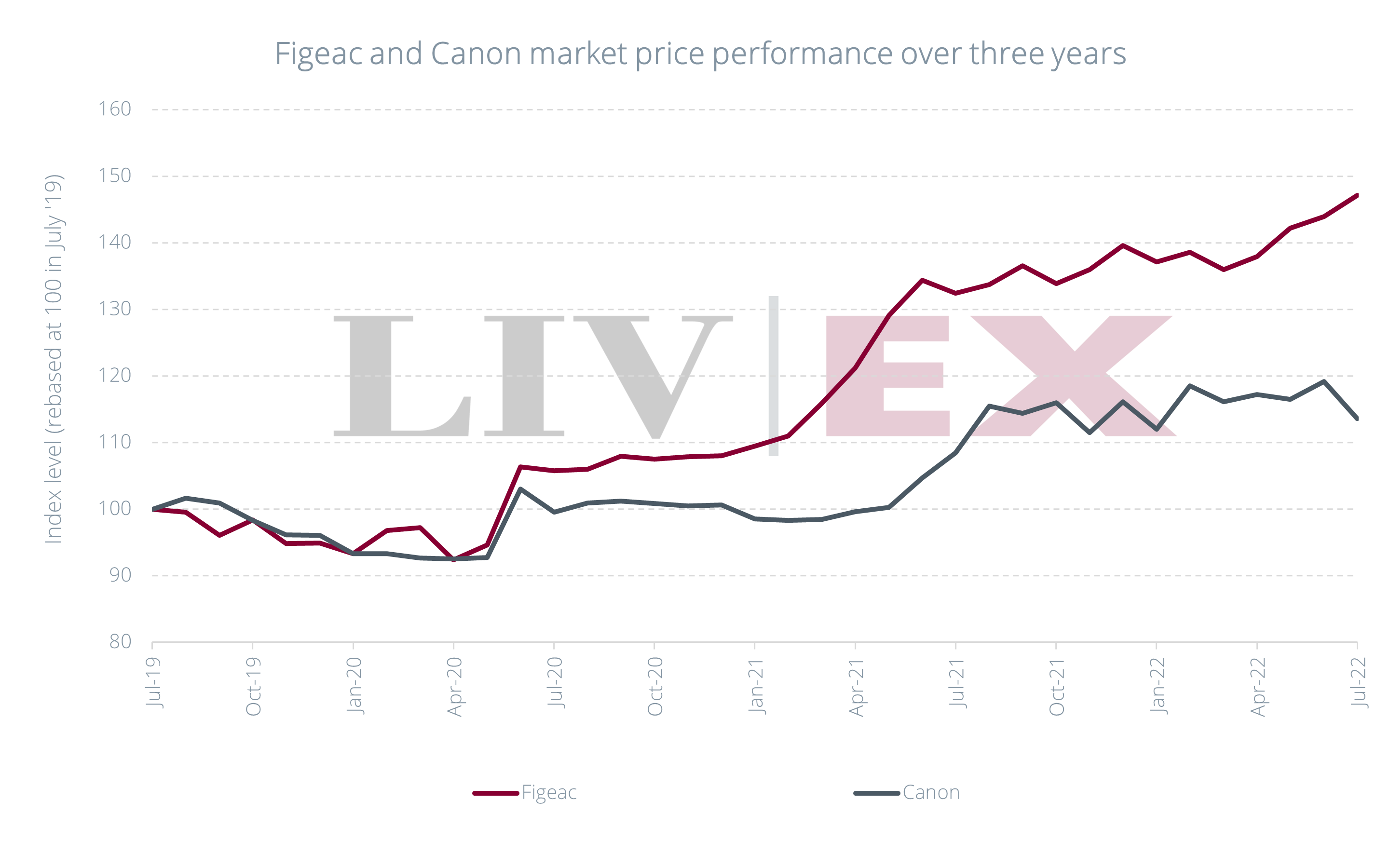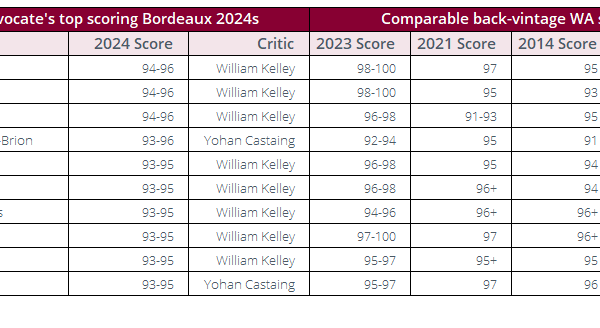- The 2012 Saint-Émilion classification is being revised this September and Château Figeac and Château Canon are potential candidates for an upgrade.
- Figeac and Canon are the most traded Saint-Émilion Grand Cru estates after the Premier Grand Cru Classé A châteaux.
- Prices for Figeac have risen more than for Canon but the 2013 vintage has been a top performer across both estates.
The Saint-Émilion classification
The Saint-Émilion classification, first conducted in 1955 and updated every 10 years, is due another revision this September.
The classification ranks estates into Grand Cru Classé (GCC) and Premier Grand Cru Classé (1GCC), with an additional ‘A’ specification designating the highest status.
The last classification of 2012 included 64 Grand Cru Classé and 18 Premier Grand Cru Classé estates, with four achieving the coveted ‘A’ grade: Ausone, Cheval Blanc, Angélus and Pavie.
However, in July 2021, Cheval Blanc and Ausone announced their withdrawal from the upcoming revision, thus renouncing their status as Premier Grand Cru Classé A. Château Angélus followed in their footsteps in January this year, leaving only Château Pavie at the top tier.
The forthcoming classification might see Figeac and Canon joining it at the top. It would certainly not be a surprise to many people if they were promoted.
Trade within Saint-Émilion Grand Cru

On the secondary market, Figeac and Canon are the most traded wines after the Premier Grand Cru Classé A estates. They have taken 10.8% and 4.3% respectively of total Saint-Émilion Grand Cru trade year-to-date.
The most in-demand Figeac vintages have been 2018, 2016 and 2014, and for Canon the 2019, 2018 and 2017.
Figeac vs Canon price performance

As the more sought-after wine, prices for Figeac have (on average) also risen more than they have for Canon. Over the past three years, Figeac is up 47.1%, while Canon has risen 13.6%.
In the past year, Figeac’s best-performing vintages have been the 2013, 2005 and 2008. The 2013 vintage has also led Canon’s price performance during the same period, followed by the 2007 and 2020.
Liv-ex members can explore their individual price performance via the Charting Tool.
Liv-ex analysis is drawn from the world’s most comprehensive database of fine wine prices. The data reflects the real time activity of Liv-ex’s 600 merchant members from across the globe. Together they represent the largest pool of liquidity in the world – currently £100m of bids and offers across 16,000 wines. Independent data, direct from the market.
Not a member of Liv-ex? Request a demo to see the exchange and a member of our team will be in touch with you shortly.



